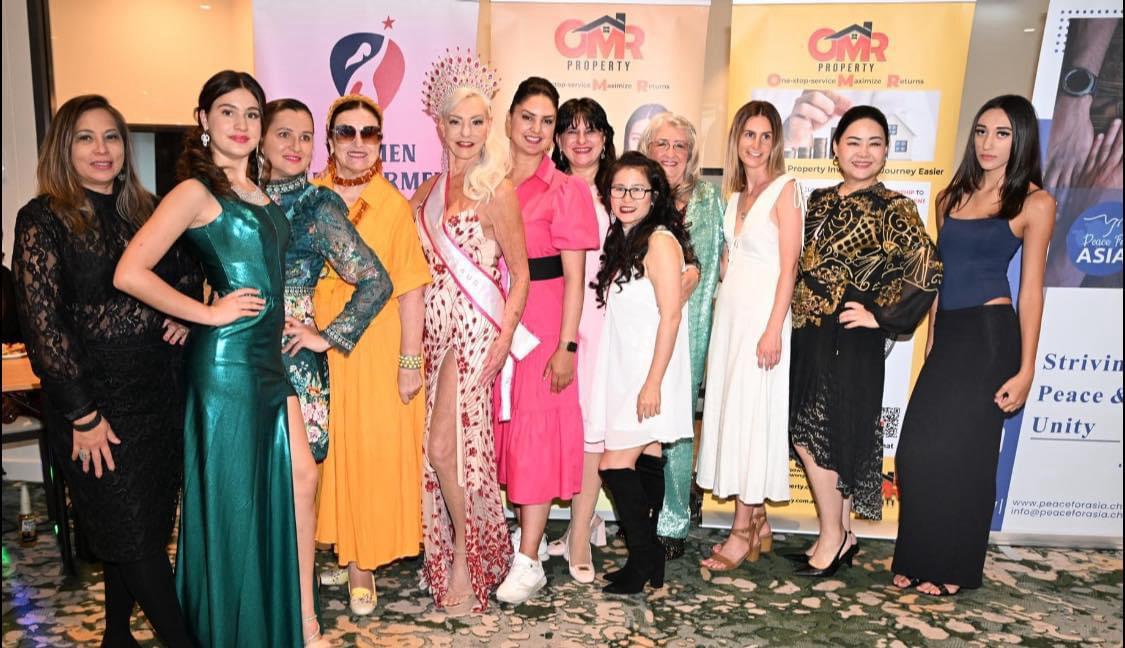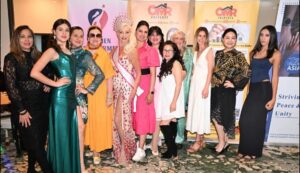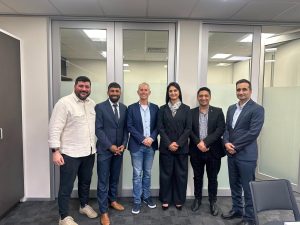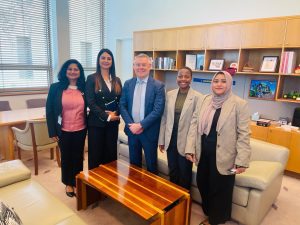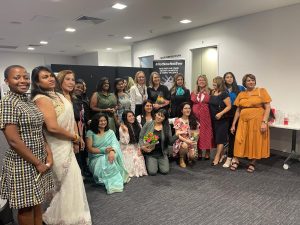Women Empowerment and Leadership association stand and raise its voice against Domestic Violence.
WHICH HAPPENING ON A DAILY BASE IN AFGHANISTAN
WEL Director Rita Anwari Sultani had the pleasure to raise the voice of Afghan women and girls who have been held silent.
She presents the history of higher education in Afghanistan.
Which focused precisely on women and girls and the struggles that they have faced and the achievements that they have accomplished in the last 20 years.
Part of her presentation:
After the Taliban in 2001, the situation was getting better the acceptance of women and girls in society was getting higher and higher each day and the strategies government created about gender equality and the participation of women and girls in government completely changed the role of women in Afghanistan. Women and girls in this last decade in Afghanistan showed that they can be anything they want being a journalist or working on TV to being in government as a minister or MP.
but Today after all these developments again darkness took over Afghanistan and the main victims of this darkness are women and girls, sadly enough that one more time we are witnessing the cruel and barbaric laws against girls going to school or work and their higher education.
Even their physical appearance of what they should where there is no place in the current regime of Taliban for women and girls, but still, we can see how hard women and girls are trying to achieve their rights. For the world to see the cruelty of the Taliban and to help them fight back against this terroristic group. We would start the presentation by going to the first university of Afghanistan.
History
• Which was established in 1903 by King Nader Khan by the name of Kabul University.
• After that King Amanullah khan, he expanded the Higher education system by connecting Afghanistan’s Higher Education system with European and other Asian countries.
• There wasn’t any change in the higher education system After Amanullah khan.
• With The soviet invasion and later civil war that happen Education system was going on in,1990 there were 14,600 students, of which 10,00 were in Kabul university and 60% were women.
• By the early 1990s women equalled roughly 40% of the students in university. Before the Taliban took control of Kabul, schools were coeducational and women accounted for 70% of teachers, 50% of civil servants, and 40per cent of medical doctors.
• After that when in Sep 1996 Taliban took the control of Kabul they completely ruined the Education system.
• In 2001 with the help of international communities, the Afghan government developed strategies and action plans to bring women and girls back to universities and the government was initiated.
1996-to2001 Taliban’s era
• During Taliban Girls and women weren’t allowed to attend school and universities and they were forced to stay home.
• The percentage of women in Education and Higher education, and in government was 0%.
• 50% of girls in Afghanistan were forced to get married at the age of 15.
• Some reports show that even girls at the age of 10 were sold for 220 pounds of flour.
• Women in Afghanistan were vulnerable to physical and sexual abuse.
Government’s Performance
• The changes that happened in 2001 created a pathway for the government to work on new strategies and plans and focused on the participation of women.
• There were four strategies at the national level, and they were:
• ANDS (Afghanistan National Development Strategies 2008-2010)
• MDG (Millennium Development goals 2013-2018)
• SDG (Sustainability development goals)
• ANPDF (Afghanistan national peace and development framework)
ANDS: (Afghanistan National Development strategies 2008-2010)
It was focused on improving quantity and quality aspects to satisfy the demand for the market-based economy with skilled professionals. Areas that ANDS worked in Higher education were:
A: Quality assurance and accreditation
B: Increased faculty recruitment and higher education
C: Development and upgrading
D: Faculty research gender
E: Gender equity
F: Infrastructure improvement
G: Institutional autonomy
H: Information systems.
MDG (Millennium development goals)
Is an UN-based program to improve lives in developing countries this strategy was applied in Afghanistan from 2013 to 2018 strategy has 8 goals. And one of them is to promote gender equality and empower women which gives women and girls assess to go to universities and participate in social and political changes and activities. Especially in the field of higher education, this strategy helped more women and girls to apply to universities and even work in universities as teachers.
SDG (Sustainability development goals)
Is also and UN strategy for countries like Afghanistan this program has 17 goals. The program was organized based on the country’s needs. In Afghanistan, the focus was on Poverty, Gender Equality, and Quality Education. Part Gender Equality requires the participation of women and girls in every part and aspect of government.
ANPDF (The Afghanistan National Peace and Development Framework 2020-2025):
Are national strategies that are focused on women’s and their socio-economic development and women’s economic empowerment, this strategy talks about how to ensure full access of women and girls to education, freedom from domestic violence, women’s empowerment, etc.
• Another large program in Afghanistan was NHESP (National Higher Education Strategy Plan 2010-t0-2014) which worked on quality improvement and increasing access for both men and women, its two main goals were to improve quality and broaden access to higher education, with an emphasis on gender equity.
• There were also precise strategies done by the Ministry of Higher education in coordination with the Ministry of women’s Affairs for involving women and girls in Higher education.
• There was a higher Education Gender Strategy (2013) the ministry of higher education has developed an action plan to increase the number of female students and faculty.
• A-pillar plan with this was the construction of boarding schools for women and girls, with the help of the US state department they construct three boarding schools the first one in 2014 in Herat, one in Balkh the other one in Kabul with the capacity of 1200 women in total, the ministry requested another fund for 10 additional boarding schools for 4000 female students, which six of these boarding schools were completed in 2013.
• The gender programs were based on ANDS, HEP (Higher education Program) And SHEP (Straight higher education program) which both were about increasing the number of female students in universities
• This growth wasn’t rapid but slowly over time and with overcoming a lot of struggles, learning and creating solutions to problems so that women can participate in the development of Afghanistan.
Opportunities
1. International support
2. Government commitment and seeking to empower women
3. Strategies and action plans
4. Constructing and extension of new public and private universities at central and provincial levels.
5. Constructing new boarding schools.
6. Scholarships to countries like the US, Australia, Canada, Europe, the UK and Asian countries.
7. Extra seats in universities for girls specifically in fields that lacked the presence of women and girls like public policy, medicine, law, and Land economy.
8. Job opportunities in government especially the in last few years.
9. Positive discrimination according to national gender policy
Struggles
1. Poverty
2. Misinterpretation of Religion/ strict traditional rules.
3. Lack of family support
4. War livelihood (fear, bombing, Terrorism)
5. Financial problems
6. Marriages
7. Not have the right to choose what they want to do in future
8. Society problems (harassment inside and outside the universities)
9. Corruption
10. Low level of literacy in society
Women’s Achievements:
– About 2001, and 2002 there is no specific data to prove the number of women and girls in universities.
– In 2003 the total amount of female students in universities was 7224.
– In 2004 there were around 8,290 female students in universities and 133 female students in different institutes.
– In 2004, 51,250 women were employees in government working in different areas.
– In 2005 country had 22 universities and 13 institutions and a total of 8,808 female students in universities.
Girls in universities Year 2006-2008
• There were around 7550 female university students in 2006.
• This number increases to 8250 female students in universities by the year 2008.
• With a little difference in 2008, the number decreases to 8200.
The phenomenal Change
• In some provinces, there was a rapid increase in the amount number of female students applying to universities.
• Example Heart province was a highly traditional province in Afghanistan.
• According to NEXA (National Examination Administration) in 2008, the number of female students was 45% compared to male 56% of students who were participating in the University Entrance Exam.
• But in 2009 female participation in the national entrance exam for university raises to 53% while for male patricians it declined to 42%.
Years 2012 to 2016
• According to the targets outlined in the Higher Education Gender strategies (2013), female students were to represent 25% of universities by 2014 and 30% by 2015.
o There was a 19% increase in female students in universities. By October 2014, 117 women (23% of the total) were pursuing a master’s degree in Afghanistan’s universities.
o Ministry of Higher Education put a target for women to make up 20% of faculty members by 2015. by October 2014, 690 faculty members were women which makes 14%.
o The strategies also advocate increasing the number of women faculty who hold master’s degrees or a PhD. Which is a result by 2014, 203 women held a master’s degree, and 10 women a PhD.
o And the percentage of female students increases up to 20% in 2014 and then to 23% in 2016.
The year 2016 to 2018
• years there were 169 Governmental and private universities.
• There were 49,071 female students.
• 86,919 Female Employees.
• The percentage of female students specifically in 2016 was 23%
• 1% increase in 2017
• And 26% in 2018
Year 2020-to 2021
There was 167 governmental and private university in the Country.
– Around 62,730 female students and 19,155 new girls passed the entrance exam in a public university.
– Around 46,122 female student students and 10,056 newly add ones in private universities.
– A total of 13,028 female students were in institutions and 14,054 new students.
– A total of 4,149,02 women work in the government as contract workers and employees.
– 1,622 Female teachers were present in private universities, and 845 in public universities.
– To bring all women under the Education government with help of organizations constructed a university that was precisely for women by the name of MORA (Mother).
– The total capacity of this university is around 12000 and it has boarding schools for 960 women and girls.
– These were all the achievements that women had in Education from the day the Taliban fail in 2001 till 2021.
– Women studied in universities after graduation they worked in government or any other private sector to bring change, to live a better life.
What we must do now?
– Any Afghan Women and girls that have connections with international communities, we must force the international community to convince the Taliban through a diplomatic channel that they should accept the right of Women and Girl’s education and work which is their right.
– According to Sharri laws that the Taliban regime claims they are rolling by,
Which doesn’t say anything like with the Taliban’s constitution their laws for women’s appearance.









